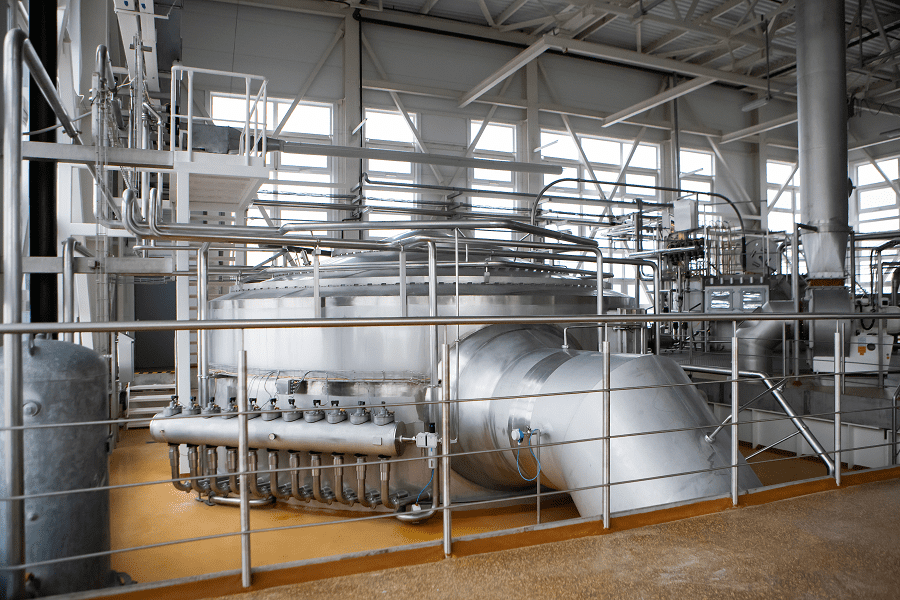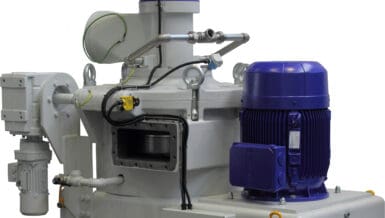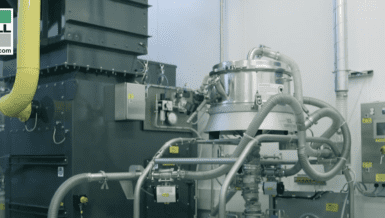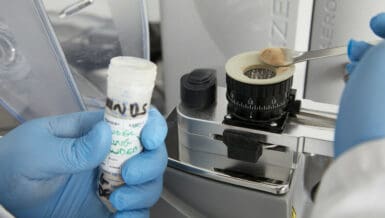Using powdered materials has advantages such as being purer when contaminates have been removed, being lighter than the original product due to having been dried, and therefore more stable during storage. Bulk powders are convenient for global transportation and easier to finally process into their desired final product.
Dissolution of a powder in a solution
Powders can be mixed into solutions, filled into sachets or capsules, pressed into tablets, sprayed as coatings, and more, the applications are diverse even as far as space. A large majority of production involves adding dried powders to solutions. The solubility and dissolution are key processing areas in industries that use powders for their products. Dissolution needs to be fast and efficient and it refers to the process of a substance in this case a powder dissolving or breaking apart to form a uniform homogenous solution. This happens due to molecular collisions of the solvent like water, alcohol, oil, etc. between their molecules and the foreign particles introduced.
Dissolution issues
Heating a solvent agitates the molecules making them move faster thereby having more interactions with the foreign particles resulting in increased dissolution. Stirring will have a similar effect as it introduces a new solution to the foreign particles to bind to. Generally, smaller particles with more surface area dissolve faster than larger particles if the volume is the same unless they lump together which possess several problems for powder and granule manufacturers and processing plants. The solution to a clumping issue is hard to identify.
It is dependent on the cause phenomena that are responsible for the lumping of the bulk material leading to dispersibility, hygroscopicity, and wettability. On the other hand, water can more easily penetrate the particles with more pores, which results in faster dissolution. Therefore, the porosity of the particles also plays an important role in the dissolution. However, in practice for factory operations, it is difficult to identify a root cause, further laboratory testing is important in identifying the root cause.
Powder dissolutions are of key importance in many industries
Food powders are an important aspect of processed foods. Globally food powders are used in everyday life and represent a large proportion of the total volume of processed foods around the world. In many industries especially in the food industry, powder reconstitution is a common process, this is where among other things dissolution of the powder plays a key role, to maintain quality control and consistency of the intended product whether it be powders intended for food, paint, pharmaceutical, additives, etc.
The importance of reconstitution
Proper dispersion and dissolution of powder are important during industrial processing and consumer use as became clear in the previous paragraph. For a product to attain a high level of quality and usability the process of reconstitution is vastly used. The powder needs to undergo reconstitution easily and be as close to, if not equal to the original product, including maintaining nutritional or chemical consistent values close or equal to the chemical composition of the original product or intended product. Furthermore, the differences in product origin, season, chemical purity, and production stresses, all contribute to the complexity of their behavior during reconstitution and dissolution.
Dissolution in medication
With medication for example an oral dosage relies on its effectiveness when dissolved in the fluids of the gastrointestinal tract prior to being absorbed into the blood circulation. Therefore, the rate of dissolution of medication is an important process in the successful bioavailability of the drug administered. Not to mention that for consumers it could be an annoyance when their chocolate milk powder forms lumps or a paint additive does not mix well and causes lumping and inconsistencies or more serious effects such as medication not getting absorbed properly and not giving the desired therapeutic benefits. This makes the dissolution process among other processes an important step for industries to monitor, test, and control. To ensure that powders do as intended and have the desired quality, effectiveness, and ultimately the desired consumer experience.
When looking at powders and granules there are a few properties that define their characteristics during industrial processing or as an end product such as their particle size, solubility, dispersibility, flowability, hygroscopicity, wettability, and dissolution.
In regards to designing and developing a dissolution test, several aspects need to be considered. The most obvious being a systematic approach to the entire process, proper testing equipment, correct media, agitation rate measured, testing of different batches of material to rule out different quality attributes that could show inconsistencies, surfactant concentration, etc. During all testing, it is of paramount importance to ensure visual observations during the testing which provide additional data to support differences if any in the analytical data collected. Performing any type of testing, a lot of things need to be considered, to offer a competent and professional analysis.
In conclusion
In summary, the design of a suitable dissolution procedure must take into consideration many test parameters and material characters. We can come to recognize that a good understanding of powder behavior is essential in solving many of the industries’ pitfalls, working together and solving them will help get a better understanding, resulting in more efficient production and continuous manufacturing with less downtime. Among other tests, powder dissolution testing is needed in providing correlative data to assure product performance and quality. When the dissolution processes and testing are designed properly, it will improve powder reconstitution in all industries like food and pharma which can accelerate drug development and improve food manufacturing which can cut costs and improve production times.
Join the bi-annually Particle Size Characterization and Porosity and Surface Area Characterization courses
For this purpose, Delft Solids Solutions offers two courses devoted to particle characterization to increase awareness and share knowledge related to powder technology. Our course will cover Particle Size Characterization, Porosity, and Surface Area Characterization.
In the first 2-days of our Particle Size Characterization course, we will discuss the basic principles and definitions of particle size, their shape, and the distribution techniques we use. The pros and cons of the techniques are highlighted and common pitfalls in particle size characterization are interactively discussed. Appropriate measurement techniques, accuracy, and quality control are separate topics.
A fully-equipped laboratory is located on the same premises as where the course is taught, which enables a perfect blend between theory and practice. This course is in close relation to the 1-day course Porosity and Surface Area Characterization. Both courses are scheduled together to enable attendance of both courses on 3 consecutive days.










































